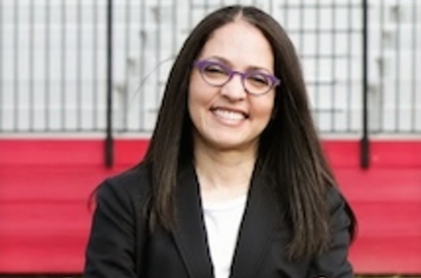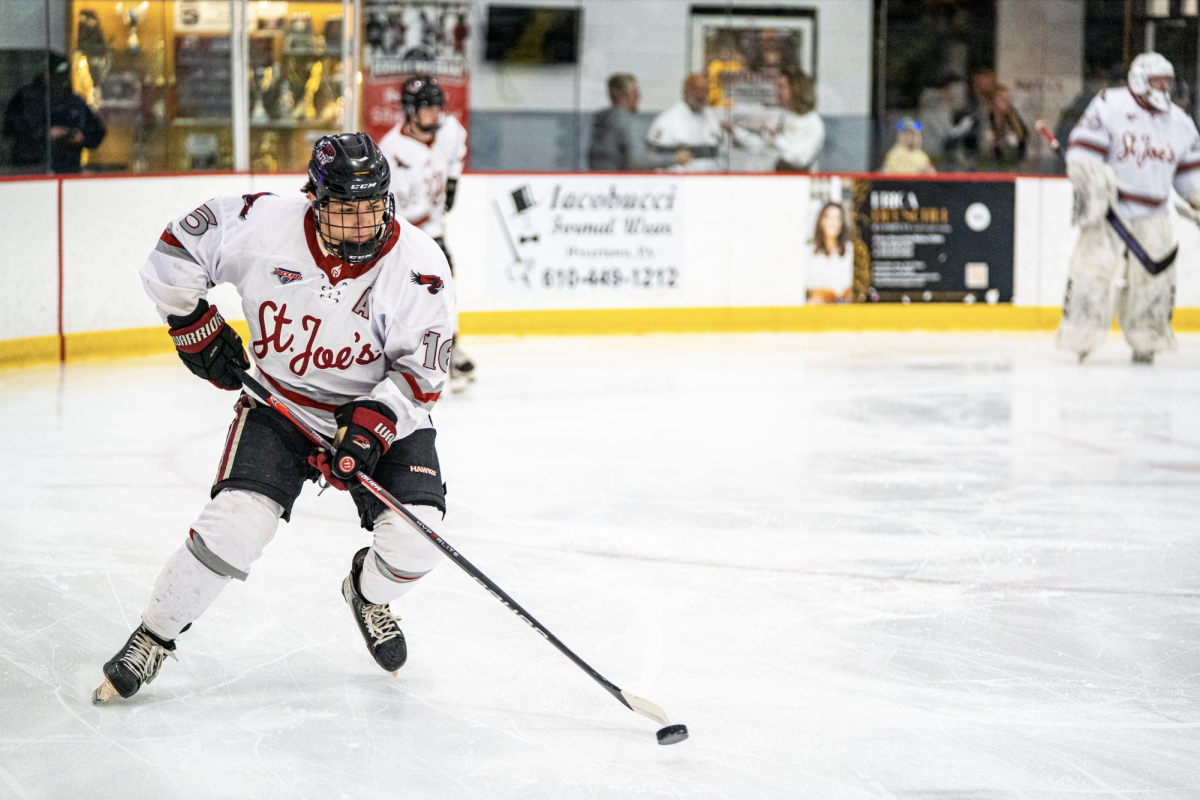Stephanie Tryce, J.D., professor of sports marketing, writes extensively on the intersectionality of sports and racial justice issues. As a licensed attorney in the city of Philadelphia, Tryce consults for professional basketball players regarding the legal responsibility of endorsers.
The Hawk spoke to Tryce about race and sports, athlete activism and how she addresses these issues in her sports marketing classes.
Why is it important to discuss race in business pedagogy, especially at a predominantly white institution (PWI) like St. Joe’s?
Our university mission states we are striving to be inclusive and a diverse community, and I take that seriously. For me, when that is part of your reason for being, it has to show up in every part of the institution. How you hire, how you retain, how you purchase things and the curriculum that you’re providing. We are trying to prepare students for a global workplace and it does them a disservice by avoiding topics that may be uncomfortable, that they may not have had much experience talking about because people in their lives and in their educational experiences have not addressed it. I was only at St. Joe’s one semester when it was very clear to me just how uncomfortable students were talking about issues of race, and most didn’t even have the language.
What does it mean to be a female professor of color at St. Joe’s, a PWI?
I’ve only ever taught at what I call historically white institutions. And you have an understanding that when something is historically some way, you’re not surprised about what shows up in that space of familiarity. Sometimes you do feel like you’re in the out group a bit, because you don’t see much of you even among faculty. Things that have happened to me in the classroom that I wonder if these things happen to white professors or white male professors. There’s also a heavy [Diversity, Equity and Inclusion] service, and this often happens whenever issues of diversity come up, we all look at the person of color in the room and expect them to do all the work or all the teaching. And oftentimes, at least in corporate America, people of color who take on that work, they often do so at a cost. Their performance appraisals will go down compared to white folks who are doing that same work. So, being a person of color talking about race, sometimes isn’t to your benefit but I do it anyway because if I don’t, then what?
There’s also invisible labor. I teach in the business school. I teach in the sports marketing major. I don’t get a lot of students of color. So when I’m doing events for the diversity inclusion office and I encounter students of color, sometimes they just want to reach out. So, it’s hard to not engage with students for whom you may be their first faculty person of color. Or maybe they don’t have one and want to reach out to you because they know that you’re navigating a predominantly white space as a faculty member, as they are as students. And so you end up being an advisor to students who aren’t technically assigned to you as advisee.
How is race significant in sports?
Sport is but a microcosm of the broader society. If there is inequity and oppression in the wider society, you are going to see it in sport. What makes sport interesting or significant is that we all have this birthright in play. We are born to play. We have played competitive games as children, in our yards or on the playground or in gym class.
So we have those common experiences that have shaped our social identity as it relates to sport, and so sport becomes an easy lens to tackle these harder societal challenges like racism, sexism, homophobia. So sport becomes that thing we all have some relation to, some piece of our social identity is rooted in it, and we can use that as a common place to then examine these more difficult topics. Here’s the really important part—to challenge old structures of inequality and design new frameworks for equity in the law. That’s the goal.
Do you think athletes of color should be able to use their platform to speak out against racial injustice?
Not just athletes of color but any athlete who wants to because it’s a platform, and it’s one that we as marketers take advantage of. We leverage the power of sport and our social identities with it. It’s why 70% of all sponsorship dollars are sports sponsorships, because brands know they can reach their consumers through sport. How is it that we are okay to use it for commercial purposes but not use it for purposes for any kind of justice issue?
Now with that said, there are circumstances where you may have contracted away your right to do that. Let’s say you’re a professional player and they don’t allow kneeling during the anthem, like the NBA that’s in the collective bargaining agreement, and so to do so means there’s going to be a consequence and if you’re willing to suffer the consequences, then have at it. And that goes for any speech. That said, for those athletes who use their platforms for social justice, especially those who have done so to their great peril, we owe them a debt of gratitude.
What can St. Joe’s do to make campus a more welcoming environment for students and student athletes of color?
The best way I can describe it is, how would you invite a guest to your home? Would you open the door to a person who’s never been to your house, say come on in, help yourself to whatever you want, and then you go off onto your business? Or do you invite them in, show them around, let me take your bag to your room, here’s where you can get food, here’s where the bathroom items are, here’s the lay of the land, this is what the neighborhood is like. Let me know if you need anything. Check in periodically just because sometimes people don’t want to ask. Which way makes you feel more included?
We’re at this reckoning with race that feels different than it has before, and we have to be careful about the form of looking like we’re trying to be inclusive versus the substance. The form looks like we’ll put this on a T-shirt, and we’ll put this on a bulletin board, and we’ll put statements on our website that say we’re a diverse community and we’ll put it in our mission statement, that’s the form of being diverse and inclusive. The substance is, what is our obligation as a historically white institution to take a look back to see where and how inequities have been in our system and how can we correct that going forward?
That’s where the real work is and that has to be done by people in power. They have to be committed to it, not just in word, but in doing the work. And it’s uncomfortable work.















































